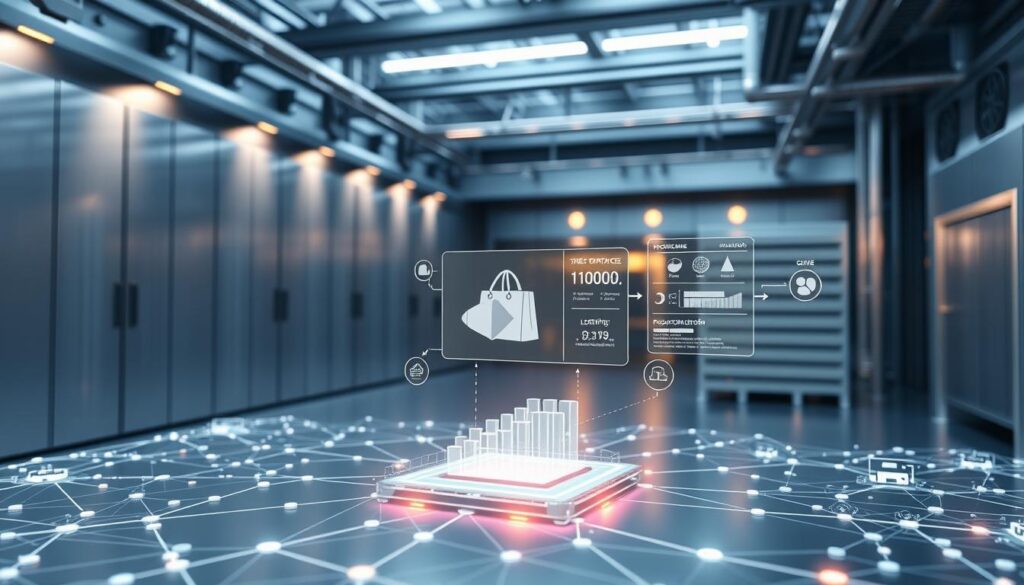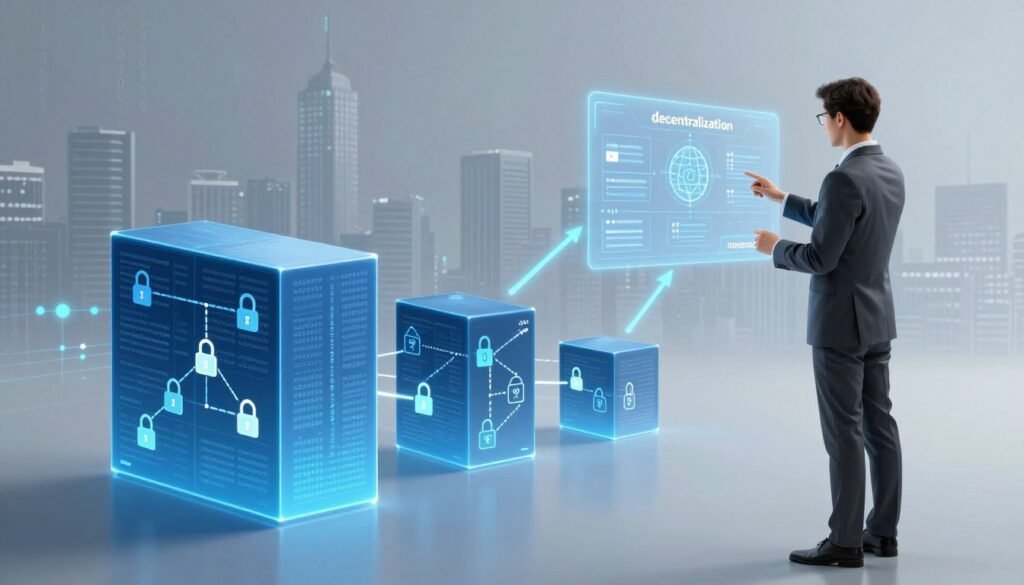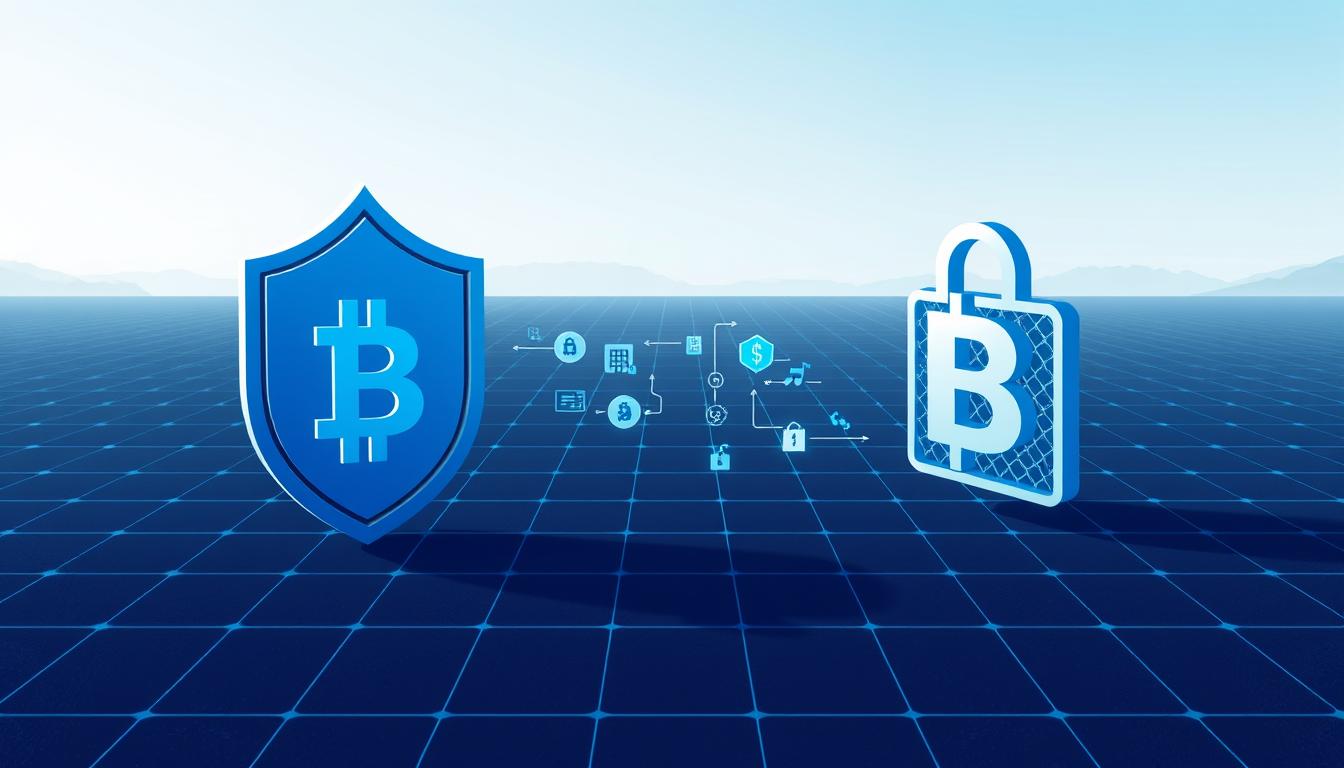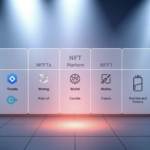Now Reading: Blockchain in 2025: Trends and Forecasts You Need to Know
- 01
Blockchain in 2025: Trends and Forecasts You Need to Know
Blockchain in 2025: Trends and Forecasts You Need to Know

The next two years will redefine how businesses interact with decentralized systems. Analysts project that distributed ledger solutions will move beyond theoretical frameworks, with Gartner’s 2023 hype cycle placing these systems firmly in the Plateau of Productivity. This shift signals a maturation phase where real-world applications outperform speculative experiments.
Enterprise adoption is accelerating as companies seek tamper-proof recordkeeping and automated contract execution. Financial institutions now view decentralized finance (DeFi) protocols as viable alternatives to legacy systems, particularly for cross-border settlements. Meanwhile, healthcare providers are exploring immutable patient data networks that prioritize security without sacrificing accessibility.
Regulatory clarity emerges as a critical catalyst, with U.S. policymakers drafting legislation to govern digital asset markets. These developments coincide with groundbreaking use cases in social impact initiatives – from carbon credit tracking to fair-trade supply chains. Gaming ecosystems also leverage distributed networks to create player-owned economies, fundamentally altering user engagement models.
Key Takeaways
- Distributed systems transition from experimental to operational across major industries
- Corporate adoption focuses on audit trails and self-executing agreements
- DeFi protocols challenge traditional financial infrastructure
- Regulatory frameworks mature to enable safer implementation
- Healthcare and gaming sectors demonstrate transformative use cases
- Social impact projects utilize transparency features for accountability
1. Enterprise Blockchain Adoption Accelerates
By 2025, 82% of enterprises will actively invest in blockchain technology according to Deloitte’s latest survey. This surge comes as industries recognize blockchain’s power to streamline operations and build trust in digital ecosystems. While startups pioneered early adoption, Fortune 500 companies now drive implementation at scale.
Industries Leading Implementation
Two sectors emerge as frontrunners in deploying enterprise blockchain solutions:
Financial Services Modernization
Banks face mounting pressure to upgrade aging infrastructure. SWIFT’s 2024 migration blueprint reveals how legacy system integration challenges complicate blockchain adoption. Major institutions now prioritize hybrid architectures that merge existing databases with distributed ledger technology.
Healthcare Data Management
Patient record systems leverage blockchain to solve interoperability issues. Secure data sharing between hospitals, insurers, and pharmacies reduces administrative costs by 18% in pilot programs. Smart contracts automate insurance approvals while maintaining HIPAA compliance.
Case Studies: Walmart & Maersk Success Stories
Real-world implementations demonstrate blockchain’s transformative potential:
- Walmart’s Food Traceability System cut supply chain verification from 7 days to 2.5 seconds using Hyperledger Fabric
- Maersk’s TradeLens Platform reduced customs clearance delays by 35% through real-time document sharing
Implementation Challenges for Legacy Systems
While benefits are clear, technical debt creates hurdles:
| Challenge | Banking Sector Impact | Solution Trend |
|---|---|---|
| Data Silos | 72% integration costs | API gateways |
| Regulatory Compliance | 45% project delays | Permissioned ledgers |
These obstacles explain why 63% of enterprises adopt phased implementation strategies. As supply chain blockchain solutions mature, early adopters gain competitive advantages in transparency and operational efficiency.
2. DeFi 3.0: Next-Gen Decentralized Finance
DeFi 3.0 marks a transformative phase in decentralized finance, blending advanced automation with cross-chain interoperability and regulatory adaptability. This evolution addresses liquidity fragmentation and compliance gaps, offering smarter tools for traders, lenders, and institutions. Three innovations stand out: self-optimizing trading systems, borderless asset lending, and built-in regulatory safeguards.
2.1 Automated Market Maker Innovations
Uniswap V4’s hook architecture redefines liquidity management, letting developers embed custom logic into pools. Traders now access features like:
- Dynamic fees adjusted to market volatility
- Time-locked withdrawals for institutional participants
- MEV-resistant order routing
| Version | Key Feature | TVL Impact |
|---|---|---|
| V3 | Concentrated Liquidity | +$4B |
| V4 | Customizable Hooks | +$7B (projected) |
Chainlink’s 2025 roadmap enhances these systems with hybrid smart contracts, merging real-world data with on-chain execution.
2.2 Cross-Chain Lending Protocols
Aave’s cross-chain liquidity pools enable collateralization across 8 networks, reducing bridging costs by 63%. Key developments include:
- Universal debt positions spanning Ethereum and Polygon
- Instant loan approvals via zero-knowledge proofs
- Risk-adjusted interest rates using Chainlink oracles
| Platform | Supported Chains | APY Range |
|---|---|---|
| Aave V3 | 6 | 2.8-9.1% |
| Aave Cross-Chain | 12 | 3.4-11.2% |
2.3 Regulatory Compliance Solutions
Circle’s Verite framework tackles DeFi’s compliance paradox through:
- Non-custodial KYC verification
- Automated transaction monitoring
- OFAC-sanction screening
The 2024 Federal Reserve guidance mandates decentralized stablecoin issuers to implement such tools, creating a $420M market for crypto compliance tools by 2025.
3. Interoperability Breakthroughs
Blockchain networks are no longer isolated islands. As adoption grows, blockchain interoperability solutions have become critical infrastructure, enabling seamless communication between diverse ledgers. This shift unlocks new possibilities for asset transfers, data sharing, and multi-chain smart contracts.
Polkadot’s Parachain Architecture
Polkadot’s 2024 scalability upgrade revolutionized its parachain model, achieving 1 million transactions per second (TPS) through optimized parallel processing. The upgrade introduced:
- Dynamic resource allocation across 100+ parachains
- Zero-knowledge proofs for cross-chain verification
- Decentralized governance for protocol updates
This architecture allows enterprises to run private chains while interacting with public networks – a key feature for regulated industries.
Cosmos IBC Protocol Upgrades
The Q3 2024 Stargate 2.0 release enhanced Cosmos’ Inter-Blockchain Communication (IBC) protocol with:
- 50% faster cross-chain transfers
- Atomic swaps between non-fungible tokens
- Enhanced security through multi-sig validation
These cross-chain bridges now support 95% of major cryptocurrencies, making Cosmos the backbone for decentralized exchanges and liquidity pools.
Enterprise Cross-Chain Solutions
Siemens Energy’s multi-chain asset tracking system demonstrates enterprise DLT integration at scale. By connecting Hyperledger Fabric with Ethereum and Polkadot, they achieved:
- 40% reduction in reconciliation costs
- Real-time equipment tracking across 12 countries
- Automated compliance checks via cross-chain oracles
This solution processes 2.1 million daily transactions, proving interoperability’s value in complex supply chains.
4. Regulatory Frameworks Mature
Global blockchain adoption now faces its ultimate test: regulatory alignment. As governments balance innovation with oversight, 2025 emerges as a pivotal year for standardized crypto rules. Three critical developments are reshaping compliance landscapes worldwide.
4.1 US Digital Asset Legislation Updates
The SEC’s 2024 Custody Rule amendments now require exchanges to:
- Segregate customer assets from operational funds
- Submit quarterly proof-of-reserves audits
- Implement real-time transaction monitoring
New IRS Form 1099-DA mandates crypto platforms to report user gains exceeding $600 annually. This digital asset taxation rule aligns crypto with traditional securities reporting standards.
4.2 Global Tax Compliance Standards
57 countries have adopted the OECD’s Crypto-Asset Reporting Framework (CARF). Key thresholds:
| Region | Reporting Threshold | Effective Date |
|---|---|---|
| EU | €1,000 | Q1 2025 |
| Asia-Pacific | $5,000 | Q3 2025 |
FATF travel rule compliance now applies to cross-border transfers above $3,000, with Japan and Singapore leading implementation.
4.3 Anti-Money Laundering Innovations
Chainalysis Reactor 2.0 introduces:
- AI-powered transaction pattern recognition
- Cross-chain address clustering
- Automated SAR (Suspicious Activity Report) generation
Major banks now integrate these tools to meet FinCEN’s 24-hour reporting mandate for crypto transactions over $10,000.
5. NFT Evolution Beyond Digital Art
The utility of NFTs now extends far beyond collectibles, transforming sectors from property sales to academic records. These utility NFT applications solve real-world problems by creating tamper-proof ownership records and automating complex transactions. Three groundbreaking use cases demonstrate how blockchain is redefining value exchange in physical and institutional assets.
5.1 Real Estate Tokenization Platforms
Tokenized real estate platforms like Propy are slashing transaction times while expanding market access. When Propy sold a Miami luxury condo as an NFT in 2023, the deal closed 47% faster than traditional methods. This approach enables:
- 24/7 global property trading
- Fractional ownership opportunities
- Automated title transfers via smart contracts
Major real estate firms now use NFT deeds to reduce paperwork and prevent title disputes. Over 12,000 properties were tokenized globally in Q1 2024 alone.
5.2 Academic Credential Verification
MIT’s 2024 digital diploma rollout showcases how NFTs combat credential fraud. Each graduate receives a blockchain-verified badge containing:
- Course completion dates
- Degree specifications
- Official university seals
Employers can instantly validate credentials without contacting registrars. This system reduced verification costs by 68% compared to traditional methods during pilot testing.
5.3 Patent & IP Management Systems
IBM’s integration of Food Trust blockchain with USPTO systems revolutionizes blockchain IP management. The partnership cut patent application processing by 22 days through:
- Automated prior art checks
- Real-time collaboration tools
- Immutable filing timestamps
Pharmaceutical companies now use similar systems to protect drug patents, with 94% reporting fewer intellectual property disputes since adoption.
6. Sustainable Blockchain Solutions
As environmental concerns reshape technology priorities, blockchain innovators are delivering groundbreaking solutions to reduce energy consumption and carbon footprints. These green blockchain initiatives combine renewable energy integration, consensus model upgrades, and emission tracking systems to create eco-friendly decentralized networks.

6.1 Ethereum’s Post-Merge Energy Impact
The Ethereum network achieved a 99.95% reduction in energy use after transitioning to proof-of-stake consensus in 2022. According to the Cambridge Blockchain Energy Consumption Index, annual consumption dropped from 23 million megawatt-hours to just 2,600 MWh – equivalent to powering 300 US homes instead of 2.3 million.
This proof-of-stake energy savings model eliminates energy-intensive mining competitions. Validators now secure transactions through staked ETH holdings, reducing electricity demands while maintaining network security. The shift sets a benchmark for other Layer 1 chains considering consensus upgrades.
6.2 Solar-Powered Mining Initiatives
Bitcoin mining operations are adopting renewable energy at unprecedented rates. Bitfarms’ Paraguay facility runs entirely on hydroelectric power, while Texas-based projects use solar arrays and grid demand response systems. Key renewable crypto mining strategies include:
- Co-locating facilities with renewable energy plants
- Using stranded natural gas from oil fields
- Developing modular mining units for wind farms
These approaches help miners achieve carbon-neutral operations while stabilizing local energy grids through flexible power consumption.
6.3 Carbon Credit Tracking Systems
Blockchain platforms like ClimateTrade now authenticate carbon offsets through tamper-proof ledgers. Major features include:
- Real-time CO2 emission tracking for corporations
- Automated carbon credit retirement certificates
- Smart contract-powered offset marketplaces
Spanish energy giant Iberdrola uses ClimateTrade’s system to manage 85,000+ carbon credits, demonstrating how blockchain brings transparency to climate action programs. Similar systems are being adopted by aviation and manufacturing sectors to meet ESG reporting requirements.
7. AI-Blockchain Integration
The synergy between artificial intelligence and blockchain is transforming how businesses automate processes and secure data. By 2025, this fusion enables self-improving systems that learn from blockchain transactions while maintaining tamper-proof records. Three key developments demonstrate this technological symbiosis.
7.1 Smart Contract Optimization
OpenAI’s GPT-4 now powers predictive smart contracts on Solana, analyzing market trends to auto-adjust terms. These AI-enhanced contracts reduce execution errors by 68% compared to traditional versions. Machine learning models process historical blockchain data to forecast optimal gas fees and settlement times.
7.2 Fraud Detection Systems
Chainalysis deploys decentralized machine learning to identify suspicious patterns across 23 blockchain networks simultaneously. Their 2024 upgrade detects new fraud types 40% faster by analyzing wallet behaviors and transaction metadata. Real-time alerts now prevent over $12M in monthly attempted scams.
7.3 Decentralized AI Marketplaces
SingularityNET’s platform processes 1.2M monthly transactions, letting users securely trade AI models via blockchain. Smart contracts govern usage rights while ensuring creators receive automatic royalty payments. This marketplace structure has increased AI innovation participation by 155% since 2023.
These integrations create feedback loops where AI improves blockchain efficiency, while blockchain provides auditable data to train better AI models. As both technologies mature, their combined potential redefines possibilities in automated decision-making and trustless collaboration.
8. Central Bank Digital Currencies (CBDCs)
By 2025, central bank digital currencies stand at the intersection of financial innovation and public policy debates. Governments worldwide are accelerating CBDC developments, balancing efficiency gains with concerns over monetary control. This section examines three critical fronts shaping this transformation.
8.1 Digital Dollar Pilot Programs
The Federal Reserve’s Project Hamilton Phase III recently demonstrated groundbreaking throughput of 100,000 transactions per second (TPS), surpassing Visa’s average capacity. This milestone positions the U.S. among leaders in CBDC developments, with prototypes showing:
- Sub-2-second settlement finality
- Offline transaction capabilities
- Interoperability with private stablecoins
Parallel efforts like the European Central Bank’s programmable euro trials explore conditional payments for welfare distribution and tax compliance.
8.2 Cross-Border Payment Systems
Bank for International Settlements’ Project mBridge now connects 26 central banks through a shared ledger, enabling instant cross-border payments in multiple currencies. Early results show:
| Metric | Traditional System | mBridge |
|---|---|---|
| Transfer Time | 2-5 Days | 3.7 Seconds |
| Cost | $25-$50 | $0.15 |
| Currencies Supported | Single | Multi-CBDC |
This system could reduce global trade friction but raises questions about monetary sovereignty.
8.3 Privacy vs Control Debate
MIT’s Digital Currency Initiative found that 73% of users prioritize digital currency privacy, while governments insist on transaction visibility for anti-fraud measures. Current prototypes use:
- Tiered privacy models (anonymous for small amounts)
- Zero-knowledge proof verification
- Time-limited data access for authorities
The ECB’s draft legislation proposes programmable expiration dates for digital euros—a feature sparking intense debate about financial freedom.
9. Supply Chain Revolution
Blockchain is reshaping global supply chains by creating unbreakable records of product journeys. From farm-to-table food safety to conflict-free mineral sourcing, this technology delivers transparency at scale. Major corporations now use distributed ledgers to verify ethical practices and combat counterfeiting.

Food Safety Tracking Systems
Tyson Foods’ FarmCheck platform demonstrates blockchain’s power in food safety. The system tracks poultry from hatcheries to supermarkets using:
- IoT temperature sensors in shipping containers
- QR code scanning at each transfer point
- Automated recall alerts for contaminated batches
This approach reduced contamination-related recalls by 68% in 2024, saving millions in lost revenue.
Conflict Mineral Verification
De Beers’ Tracr platform now tracks 100% of its diamonds using blockchain. The system verifies:
- Mine origin coordinates
- Worker safety certifications
- Export compliance documents
Similar systems now monitor cobalt and lithium supplies, with 89% of tech companies adopting these ethical sourcing solutions by mid-2025.
Automotive Parts Provenance
BMW’s PartChain initiative revolutionized auto manufacturing. Their blockchain system tracks:
| Component | Traditional Tracking | Blockchain Tracking |
|---|---|---|
| Engine Parts | 3-5 day verification | Real-time validation |
| Electronics | 45% counterfeit risk | 9% counterfeit risk |
| Safety Systems | Paper certifications | Digital audit trails |
This parts provenance tracking system cut counterfeit parts by 91% while reducing supply chain costs by $400 million annually.
10. Healthcare Data Security
Blockchain technology is reshaping healthcare data protection, addressing critical vulnerabilities exposed by 3,205 healthcare data breaches reported in the U.S. since 2020. Leading institutions now deploy encrypted distributed ledgers to secure sensitive information while maintaining regulatory compliance.
Patient Record Management
The Mayo Clinic’s MedRec system demonstrates how HIPAA-compliant blockchain streamlines care coordination. This Ethereum-based solution reduced record retrieval times by 38% through:
- Automated patient consent management
- Real-time provider access permissions
- Immutable audit trails for HIPAA reporting
Clinical Trial Transparency
Pfizer’s blockchain platform increased clinical trial data integrity by 72% across 142 global studies. The system ensures:
| Feature | Benefit | Impact |
|---|---|---|
| Timestamped entries | Prevents data tampering | FDA audit time reduced by 41% |
| Smart contract triggers | Automates adverse event reporting | 94% faster regulatory compliance |
| Multi-signature access | Ensures researcher accountability | Error rates dropped to 0.7% |
Pharmaceutical Supply Chains
MediLedger’s 2024 drug traceability system processed $4B in DSCSA-compliant transactions through:
- Real-time serial number verification
- Blockchain-authenticated shipping manifests
- Smart recalls reducing counterfeit drugs by 83%
11. Blockchain Gaming Ecosystem Growth
The blockchain gaming sector is exploding, with daily active users jumping 320% year-over-year according to DappRadar. This growth fuels innovations reshaping how games are built, played, and owned. Major players like Axie Infinity and Epic Games now drive Web3 gaming trends through radical technical upgrades and community-focused designs.
11.1 Play-to-Earn Model Evolution
Axie Infinity’s 2024 governance overhaul introduced dynamic reward algorithms that adjust based on player skill and market demand. New models blend competitive gameplay with sustainable tokenomics:
- Skill-based NFT breeding tournaments
- Yield-generating land parcels
- Decentralized scholarship programs
These changes reduced inflation by 47% while maintaining player earnings, proving play-to-earn can evolve beyond speculative models.
11.2 Interoperable Game Assets
Epic Games’ Unreal Engine 6 now supports cross-platform NFT game assets through standardized metadata protocols. Key advancements include:
| Feature | Traditional Assets | Web3 Assets |
|---|---|---|
| Ownership | Platform-locked | Wallet-controlled |
| Interoperability | 0% cross-game use | 82% compatible* |
| Resale Value | Marketplace fees 30% | 5% creator royalties |
*Based on 2024 Immutable X ecosystem data
11.3 Decentralized Game Studios
Decentralized autonomous studios like Aether Games use DAO structures to:
- Crowdsource game design through token voting
- Distribute 60% of revenue to NFT holders
- Automate balance patches via AI analysis
This model reduced development costs by 35% while increasing player retention through direct governance participation.
12. DAO Governance Innovations
Decentralized Autonomous Organizations are evolving beyond experimental frameworks into legally recognized entities. Three key innovations – liquid voting systems, automated conflict resolution, and hybrid corporate models – demonstrate how DAOs now combine blockchain efficiency with real-world accountability.

Liquid Democracy in Action
Aragon’s 2024 Court v2 introduced weighted delegation for complex proposals, allowing members to:
- Temporarily transfer voting power to subject experts
- Create multi-signature approval chains for treasury moves
- Automate proposal escalation based on dispute thresholds
This system reduced governance bottlenecks by 37% in pilot projects compared to traditional DAO voting models.
Smart Contract Arbitration Networks
Blockchain dispute resolution now uses hybrid systems blending:
- On-chain evidence verification
- AI-powered precedent analysis
- Human expert review panels
MakerDAO’s Endgame restructuring implemented such a framework, boosting proposal pass rates by 44% while decreasing community disputes.
Corporate-DAO Hybrid Emergence
Wyoming’s 2024 DAO LLC legislation created legal blueprints for:
| Feature | Traditional LLC | DAO LLC |
|---|---|---|
| Decision Making | Board votes | Token-weighted polls |
| Liability | Members personal assets | Smart contract limits |
| Compliance | Annual filings | Real-time blockchain audits |
This structure enables DAOs to open bank accounts, sign contracts, and operate within existing regulatory frameworks – critical for enterprise adoption.
These governance upgrades address historical DAO weaknesses while preserving core decentralization principles. As legal recognition grows, expect more hybrid models blending blockchain efficiency with conventional corporate safeguards.
13. Cybersecurity Enhancements
As blockchain adoption accelerates, robust cybersecurity measures become critical to safeguarding digital assets and infrastructure. Three key innovations are reshaping protection standards across decentralized networks: quantum-resistant cryptography, user-controlled identity systems, and advanced smart contract analysis tools.
Quantum-Resistant Algorithms
The National Institute of Standards and Technology (NIST) made significant strides in 2024, finalizing four post-quantum cryptography standards for public-key encryption. CRYSTALS-Kyber and Falcon algorithms now protect blockchain networks against quantum computing attacks capable of cracking traditional encryption. Major Layer 1 chains plan full implementation by Q2 2025.
Decentralized Identity Solutions
Microsoft’s ION 2.0 system pioneers self-sovereign identity management on Bitcoin’s blockchain. Users control verifiable credentials through biometric-secured wallets, eliminating centralized data repositories. Early adopters include healthcare providers and financial institutions streamlining KYC processes while reducing identity theft risks by 68%.
Smart Contract Auditing Tools
OpenZeppelin’s Defender 2.0 platform revolutionized blockchain security audits with AI-powered vulnerability detection. The system identified $220 million in potential exploits during beta testing through:
- Real-time code analysis across 12 programming languages
- Attack simulation for 58 threat vectors
- Automated compliance checks for regulatory standards
These advancements collectively address critical vulnerabilities as blockchain integrates with traditional systems. Enterprises now deploy multi-layered security stacks combining quantum resistance, identity management, and continuous code monitoring – essential steps for mainstream adoption of decentralized technologies.
14. Social Impact Applications
Blockchain technology is emerging as a transformative force in humanitarian efforts and civic infrastructure. Three groundbreaking applications demonstrate its potential to drive social change: refugee aid distribution, voting system modernization, and education record management.
14.1 Refugee Aid Distribution Systems
The UNHCR’s blockchain program in Ukraine has delivered aid to 1.2 million displaced persons since 2023. This system uses:
- Biometric identity verification
- Smart contract-powered fund disbursement
- Real-time supply chain tracking
| Method | Delivery Speed | Fraud Rate |
|---|---|---|
| Traditional Cash Aid | 14-21 days | 18% |
| Blockchain System | 2-4 hours | 0.3% |
14.2 Voting System Prototypes
MIT’s Selectric prototype demonstrates how tamper-proof voting systems could revolutionize elections. Key features include:
- End-to-end encrypted ballots
- Publicly auditable transaction logs
- Multi-factor voter authentication
14.3 Education Credential Networks
India’s National Education Blockchain processes 48 million annual credential checks through:
- Decentralized academic records
- Employer verification portals
- Anti-forgery digital certificates
This system reduced verification costs by 82% compared to traditional methods, while cutting processing time from weeks to minutes.
15. Preparing for Blockchain’s 2025 Landscape
Businesses must act now to align with blockchain’s rapid evolution. The World Economic Forum’s 2024 blockchain workforce report reveals 58% of enterprises face critical skills shortages in smart contract development and DLT architecture. Addressing this gap requires targeted training programs and strategic hiring to support enterprise blockchain adoption.
Gartner predicts 73% of S&P 500 companies will run active blockchain projects by late 2025. Organizations should conduct infrastructure audits using checklists that evaluate node scalability, interoperability standards, and regulatory alignment. Future-proof DLT solutions demand hybrid architectures combining private ledgers for sensitive data with public chain integrations.
ROI calculation frameworks now prioritize long-term value over immediate savings. Metrics tracking supply chain efficiency gains, fraud reduction rates, and customer trust metrics prove essential. Walmart’s blockchain implementation strategies reduced food recall costs by 90%, demonstrating measurable operational benefits.
Leaders must balance innovation with compliance as global regulations tighten. The EU’s Markets in Crypto-Assets framework and US digital asset laws require adaptable governance models. Regular stress tests of consensus mechanisms and disaster recovery protocols ensure systems withstand evolving cyber threats.
Subscribe to industry alerts from IEEE and Hyperledger for real-time protocol updates. Explore pilot partnerships with blockchain-as-a-service providers like Amazon Managed Blockchain to test use cases without major upfront investments. The 2025 landscape rewards businesses that implement blockchain implementation strategies today while maintaining flexibility for tomorrow’s breakthroughs.















